How to Substitute for Frugal, Real Food Ingredients. As my family transitioned to real food, we swapped many ingredients for baking with healthier substitutes. Here are some tips I’ve found extremely valuable.
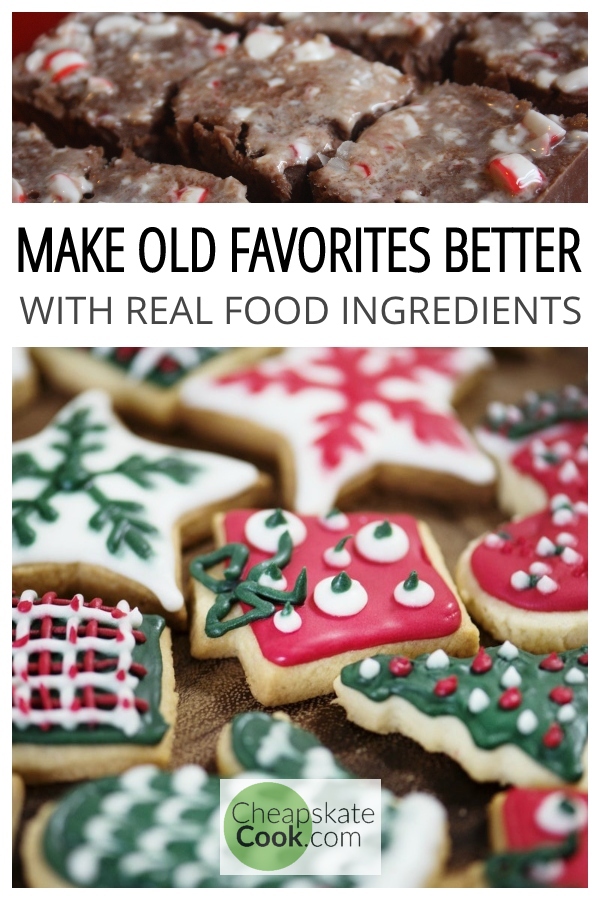
When I was 12, my mom was basically terrified of the teenage years. She told me that she almost didn’t have children because that’s practically a guarantee that you’ll have to live with teenagers. Best preteen pep-talk ever. No pressure, kid.
She did her best, and thankfully, I was a fairly benign teenager. I spent hours reading classic literature, debating theology and Star Wars trivia, spilled only a few tears over boys, and attended zero wild parties (you hear that, mom? I just told the internet, so it must be true).
I think every generation tries to improve upon the last. When I was growing up, holiday baking meant vegetable oil, shortening, and white sugar. Meanwhile my kids called M&Ms “beans” until they were 6 years old.
Maybe you grew up with a lot of classic holiday treats, but you wonder how they fit into a healthier, more frugal lifestyle. As my family transitioned to real food, we swapped a lot of ingredients with more natural substitutes.
Here are some tips I found extremely valuable:
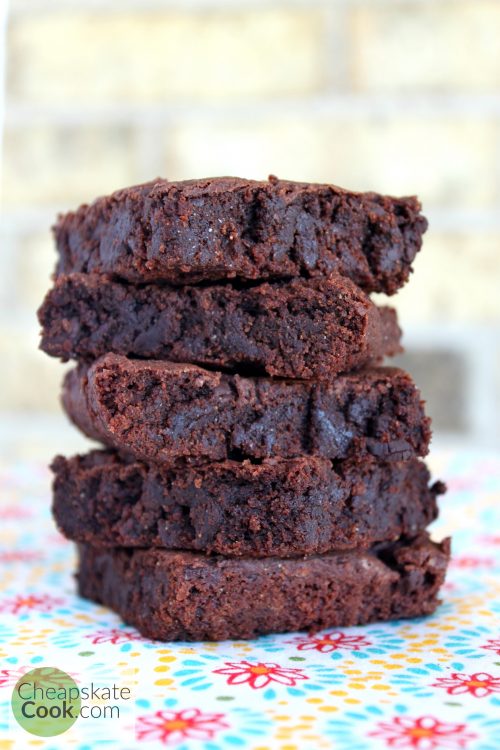
Whole Grains
At this point, most of us know whole grains are better than the white all-purpose stuff. If you’re new to whole grains, you need to know a few things:
- There are several kinds of whole wheat available at stores: “Red Wheat” and “White Wheat” are the basic options. Red is darker with a heartier flavor, and white is lighter and more like the all-purpose flour we’re used to. If you have a choice, you want white wheat for desserts.
- Store-bought whole wheat is denser than all-purpose and may change the texture of your cookies more than you like. You can go halfsies and use part white and part whole wheat. That being said, I know people (we’re some of them) who now crave the flavor and heartiness of whole grain and no longer care for gluey, white flour cookies. However, change requires, you know, change, so be patient with yourself and your eaters.
Tip:
If you’re serious about whole grains, you may want a grain mill (that’s an affiliate link, which means I receive a small compensation if you make a purchase using the links. You can view my full disclosure policy here).
I recommend seeing if a friend has one and trying it out before investing in it yourself. Freshly ground grains are much lighter and some say are more nutritious than pre-ground flour.
While the grain mill is an investment, it was my FIRST big kitchen appliance purchase. Using freshly ground grains is one of the most frugal and kid-friendly ways to eat real food.
Less (or Better) Sweeteners
I like experimenting with healthier sweeteners, and I make natural sweeteners fit in our budget by making fewer desserts (which is obviously better for us anyway), and shopping for the best prices.
Here’s how I save money and eat better with natural sweeteners – plus which ones I use most often.
How to Bake with Honey (or Maple Syrup)
Using honey or maple syrup instead of white sugar is easy. Try these tips:
- Replace the sugar with 1/2-2/3 the amount of honey or maple syrup. So if a recipe calls for 1 cup sugar, use 1/2-2/3 cup honey. Usually, I use 1/2.
- Remove 1 tablespoon of other liquid from the recipe for every 1/4 cup of honey or maple syrup.
- And you may have better results if you add 1/4 – 1/2 teaspoon baking soda per cup of honey or maple syrup
- When baking, lower the temperature of the oven by 25 degrees Fahrenheit and bake it a little longer than the sugar version calls for.
That being said, when I bake with honey instead of sugar, I rarely follow steps 2-4. Everything turns out great. These guidelines simply help ensure that your healthier baked good turns out consistently well.
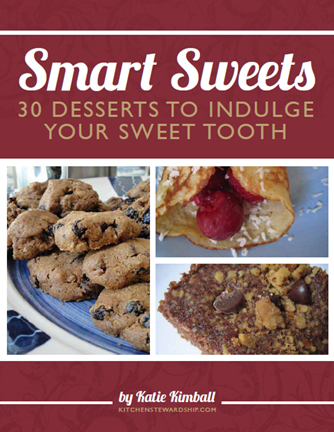
Try This
Unfortunately, everything we do to the original recipe – changing the flour, the sweetener, the fats (see below) changes it slightly, so we probably won’t make the perfect healthified version at first. After all, we’re messing with a scientific formula.
However, I’ve hardly met a combination of flour, eggs, butter, and sweetener that didn’t at least taste good, so I enjoy the less-than-perfect results until I hit gold.
My favorite real food desserts cookbook is Smart Sweets (affiliate link). Katie took all our favorite classic dessert recipes, tested them 8 million times, and produced a gem I use more than any other cookbook. It’s been 5 years, and it’s still my favorite.
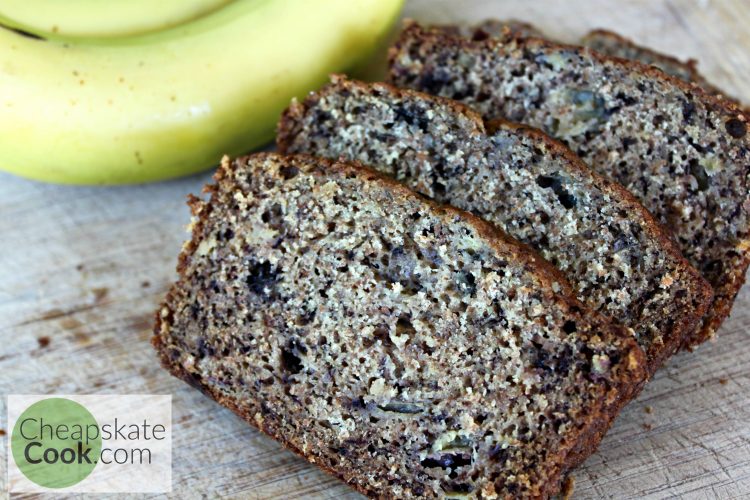
My grandma’s recipe called for all-purpose flour, white sugar, and vegetable oil. Click the photo to see the real food substitutions.
Healthy Fats
Healthy fats is a fascinating issue. Recently, I shared a list what I use right now and how I find the best price.
Quick List of Real Food Substitutes for “Shortening”
From cheapest to most expensive in my area:
- Butter
- Organic palm shortening (vegan)
- Coconut oil (raw or expeller-pressed) (vegan)
If a Baking Recipe Calls for “Oil”, Try These
From cheapest to most expensive in my area:
- Unsalted Butter, melted
- Olive oil (gives an olive-y taste, which some notice and some don’t) (vegan)
- Avocado oil (vegan)
- Grapeseed oil (vegan)
- Coconut oil, melted (raw or expeller-pressed) (vegan)
One of the most frugal ways to substitute real food for a fat, is to use applesauce. Learn how here.
Apparently, when you melt butter, you can improve the texture of your baked good by straining the butter through a coffee filter to make clarified butter, or ghee. I’ll be honest and admit I’ve never gone this far, because #life.
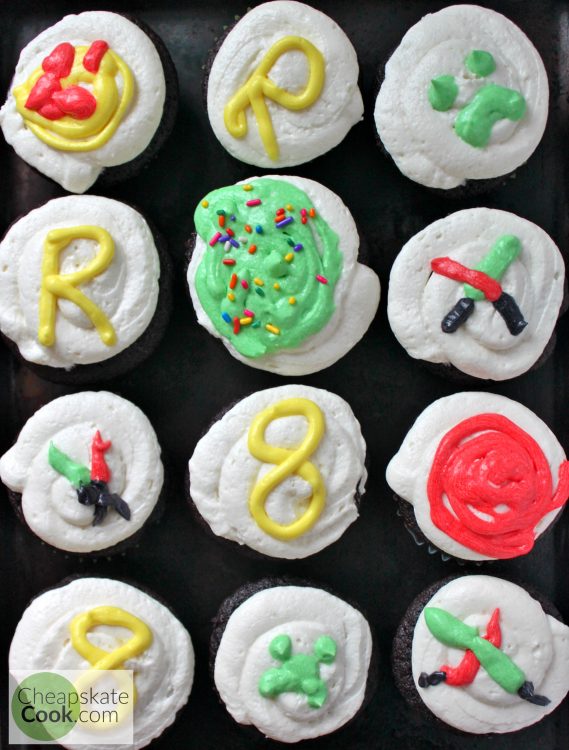
Whipped buttercream frosting with artificial coloring. Because #balance.
Sprinkles, Frosting & Candy
Everyone has a line they will not cross: we will meddle with our desserts this far and no further. For some, sprinkles is where you will compromise. Or maybe at cinnamon candies for frosted sugar cookies. For me, for now, it’s buttercream frosting made with powdered sugar.
Don’t try to tell me cashew frosting tastes just as good. I’ll try it someday, but for now, I keep using buttercream.
Wherever you choose to draw the line is up to you. I won’t judge you. My face will be too full of frosted cookies.
Whether you choose to try whole wheat flour this year or switch from shortening to butter, be patient with yourself and your eaters. My mom started changing our food when I was in high school. While several (or 10) years of complaining passed, my siblings are now grown and mostly chose healthier whole foods lifestyles.
That’s why I think it’s worth making our old favorites better. What about you?
What are some of your favorite homemade baked treats?
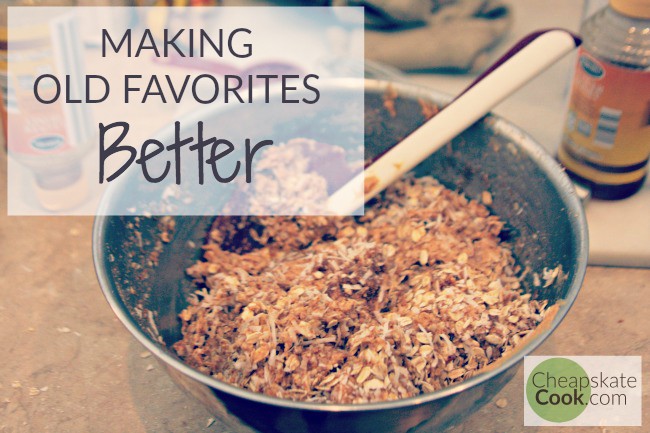

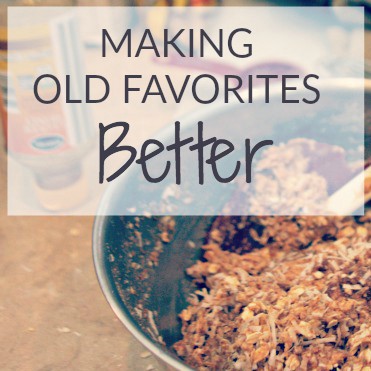
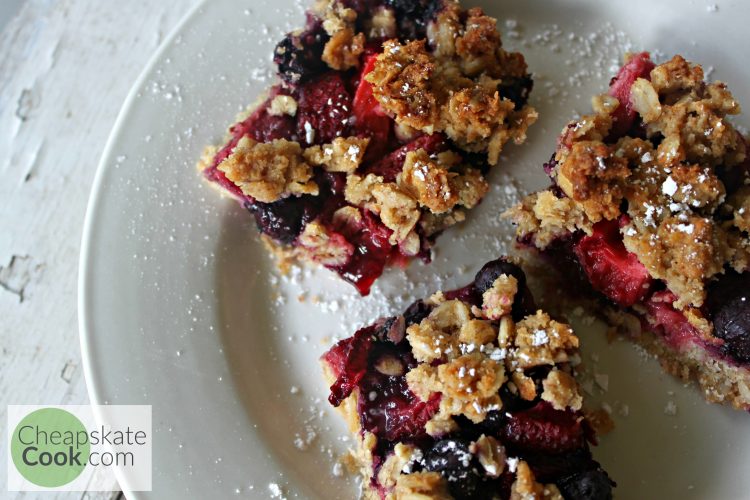
You have some really great tips in this recipe! I really need to put some into practicie.
I have been making some of my old favourites a little less sweeter and I can’t taste the difference.
These tips are so helpful! I’m definitely going to try swapping honey for white sugar!
Those are healthy reminders. Something I had not thought about is owning a grain mill. We still have a functioning mill in the neighborhood who can turn your grains to flour but I do like the idea of an own mill for whole grains.
So many good suggestions on how to make your favorite treats into a healthier option.